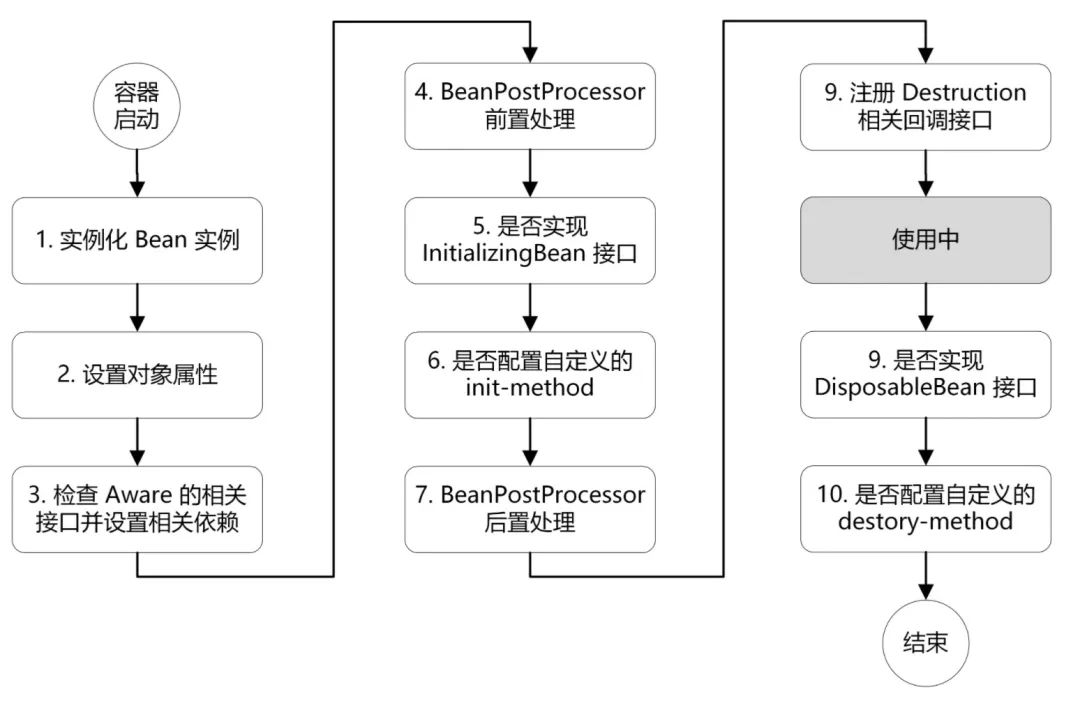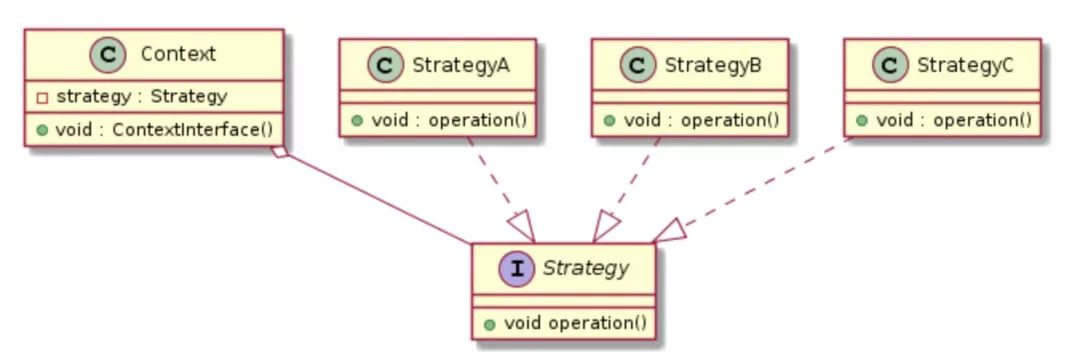Bean 生命周期
Bean 生命周期

接口
BeanFactoryPostProcessor 接口
通过
@Configuration
public class SelfBeanFactoryLoader implements BeanFactoryPostProcessor {
@Override
public void postProcessBeanFactory(
ConfigurableListableBeanFactory beanFactory
)
throws BeansException {
beanFactory.registerSingleton("windowQpsControl", new WindowQpsControl());
}
}
BeanDefinitionRegistryPostProcessor 接口
这个接口是继承自
@Configuration
public class SelfBeanLoader implements BeanDefinitionRegistryPostProcessor {
@Override
public void postProcessBeanFactory(
ConfigurableListableBeanFactory beanFactory
)
throws BeansException {}
@Override
public void postProcessBeanDefinitionRegistry(
BeanDefinitionRegistry registry
)
throws BeansException {
AnnotatedGenericBeanDefinition cacheHelper = new AnnotatedGenericBeanDefinition(
CacheHelper.class
);
registry.registerBeanDefinition("cacheHelper", cacheHelper);
}
}
ApplicationContextAware
这个接口比较靠后也是大家使用比较多的,在前两者
@Configuration
public class SelfContextLoader implements ApplicationContextAware {
private ApplicationContext context;
@Override
public void setApplicationContext(ApplicationContext applicationContext)
throws BeansException {
this.context = applicationContext;
addBeans();
}
private void addBeans() {
if (this.context instanceof ConfigurableApplicationContext) {
ConfigurableListableBeanFactory factory =
((ConfigurableApplicationContext) this.context).getBeanFactory();
Environment environment = context.getEnvironment();
System.out.println("......environment :" + environment);
factory.registerSingleton("client", new Client());
try {
if (factory instanceof BeanDefinitionRegistry) {
// 加载XML
ResourcePatternResolver rp = new PathMatchingResourcePatternResolver();
Resource[] resources = rp.getResources("classpath*:inner.xml"); // 加载A
new XmlBeanDefinitionReader((DefaultListableBeanFactory) factory)
.loadBeanDefinitions(resources);
}
} catch (Exception e) {
e.printStackTrace();
}
} else {
throw new RuntimeException(" the environment is wrong !!!");
}
}
}
案例:结合策略模式
策略模式相信大家都应该比较熟悉,它定义了一系列的算法,并将每一个算法封装起来,使每个算法可以相互替代,使算法本身和使用算法的客户端分割开来,相互独立。其适用的场景是这样的:一个大功能,它有许多不同类型的实现(策略类

举一个简单的例子,业务背景是这样的:平台需要根据不同的业务进行鉴权,每个业务的鉴权逻辑不一样,都有自己的一套独立的判断逻辑,因此需要根据传入的
/**
* 业务权限校验处理器
*/
publicinterface PermissionCheckHandler {
/**
* 判断是否是自己能够处理的权限校验类型
*/
boolean isMatched(BizType bizType);
/**
* 权限校验逻辑
*/
PermissionCheckResultDTO permissionCheck(Long userId, String bizCode);
}
// 业务1的鉴权逻辑我们假设是这样的:
/**
* 冷启动权限校验处理器
*/
@Component
publicclass ColdStartPermissionCheckHandlerImpl implements PermissionCheckHandler {
@Override
public boolean isMatched(BizType bizType) {
return BizType.COLD_START.equals(bizType);
}
@Override
public PermissionCheckResultDTO permissionCheck(Long userId, String bizCode) {
//业务特有鉴权逻辑
}
}
// 业务2的鉴权逻辑我们假设是这样的:
/**
* 趋势业务权限校验处理器
*/
@Component
publicclass TrendPermissionCheckHandlerImpl implements PermissionCheckHandler {
@Override
public boolean isMatched(BizType bizType) {
return BizType.TREND.equals(bizType);
}
@Override
public PermissionCheckResultDTO permissionCheck(Long userId, String bizCode){
//业务特有鉴权逻辑
}
}
Aware 接口- BeanPostProcessor
InitializingBean 和init-method
我们这里用到的主要是
可以很明显的看出,如果以后还有一些其他的业务需要制定相应的鉴权逻辑,我们只需要编写对应的策略类就好了,无需再破坏当前
/**
* 权限校验服务类
*/
@Slf4j
@Service
publicclass PermissionServiceImpl
implements PermissionService, ApplicationContextAware, InitializingBean {
private ApplicationContext applicationContext;
//注:这里可以使用Map,偷个懒
private List<PermissionCheckHandler> handlers = new ArrayList<>();
@Override
public PermissionCheckResultDTO permissionCheck(ArtemisSellerBizType artemisSellerBizType, Long userId,
String bizCode) {
//省略一些前置逻辑
PermissionCheckHandler handler = getHandler(artemisSellerBizType);
return handler.permissionCheck(userId, bizCode);
}
private PermissionCheckHandler getHandler(ArtemisSellerBizType artemisSellerBizType) {
for (PermissionCheckHandler handler : handlers) {
if (handler.isMatched(artemisSellerBizType)) {
return handler;
}
}
return null;
}
@Override
public void afterPropertiesSet() throws Exception {
for (PermissionCheckHandler handler : applicationContext.getBeansOfType(PermissionCheckHandler.class)
.values()) {
handlers.add(handler);
log.warn("load permission check handler [{}]", handler.getClass().getName());
}
}
@Override
public void setApplicationContext(ApplicationContext applicationContext) throws BeansException {
this.applicationContext = applicationContext;
}
}
